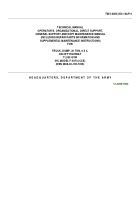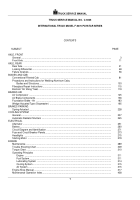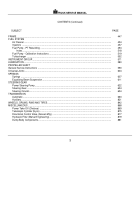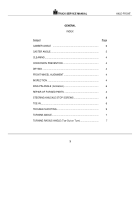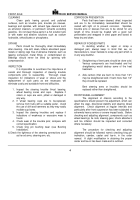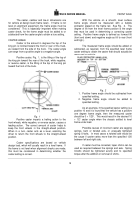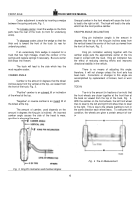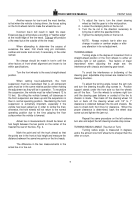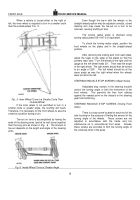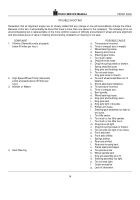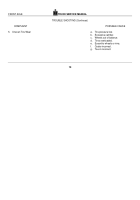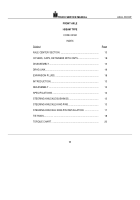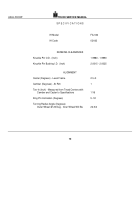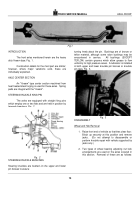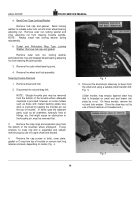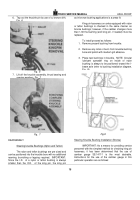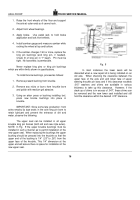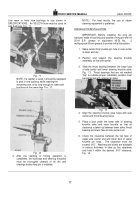TM-5-3805-254-14-P-2 - Page 8 of 894
FRONT AXLE
TRUCK SERVICE MANUAL
Caster adjustment is made by inserting a wedge
between the spring and axle, Fig.
1.
To increase caster, insert the wedge so the thick
parts face the rear of the truck (to front for underslung
axles).
To decrease caster, place the wedge so that the
thick end is toward the front of the truck (to rear for
underslung axles).
If an excessively thick wedge is required for a
truck that has high mileage, check the contour of the
springs and replace springs if necessary.
Be sure center
bolt drops into I-beam.
The truck will lead to the side which has the
most negative caster.
CAMBER ANGLE
Camber is the amount in degrees that the wheel
inclines away from the vertical at the top, as viewed from
the front of the truck, Fig.
3.
"Positive" camber is an outward tilt or inclination
of the wheel at the top.
"Negative" or reverse camber is an inward tilt of
the wheel at the top.
The amount of camber, used depends on the
amount in degrees the king pin is inclined.
An incorrect
camber angle causes the side of the tread to wear,
resulting in abnormal tire wear.
Fig.
3
King Pin Inclination and Camber Angles
Unequal camber in the front wheels will cause the truck
to lead to the right-or left.
The truck will lead to the side
which has the most positive camber.
KING PIN ANGLE (INCLINATION)
King pin inclination (angle) is the amount in
degrees that the top of the king pin inclines away from
the vertical toward the center of the truck as viewed from
the front of the truck, Fig.
3.
King pin inclination working together with the
camber angle puts the approximate center of the tire
tread in contact with the road.
King pin inclination has
the effect of reducing steering efforts and improves
directional stability in the vehicle.
There is no means of adjusting this angle;
therefore, it will not change unless the front axle has
been bent.
Corrections or changes to this angle are
accomplished by replacement of broken, bent or worn
parts.
TOE-IN
Toe-in is the amount (in fractions of an inch) that
the front wheels are closer together at the front than at
the back as viewed from the top of the truck, Fig.
4.
With the camber on the front wheels, the left front wheel
tries to steer to the left and right front wheel tries to steer
to the right.
This is due to the wheels wanting to turn in
the same direction each wheel leans.
To overcome this
condition, the wheels are given a certain amount of toe-
in.
Fig.
4
Toe-In Measurement
6
Back to Top

